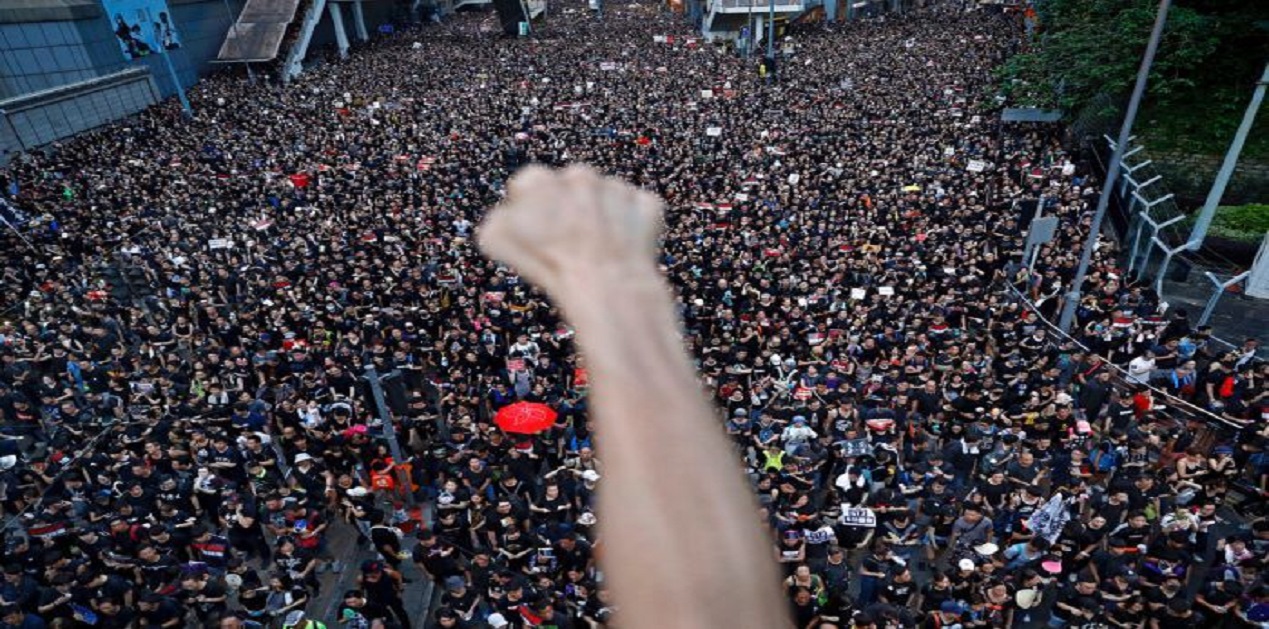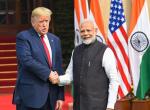Introduction
The current protests in Hong Kong doesn’t seem to be ending. The protestors are working on the weekdays and staging protests on the weekends. Recently, the clash between the police and the demonstrators have become fierce; two protestor have been killed, a police officer has been stabbed in the neck, and a homemade bomb was detonated.
There are no signs that the protests against the local government and China are cooling off or ending any time soon. In fact, the vast majority of Hong Kong citizens are actively supporting them. Over 2,300 aviation workers have at times joined strike calls, leading to the cancellation of 224 flights to and from the airport. On 12th and 13th August, hundreds of flights were cancelled.1 In a direct challenge to China, the activists have a new anthem, “Glory to Kong”. It was released on 11th September and the Hong Kongers are singing it in unison across the city. In the face of tough action by the police they have trampled the Chinese flag, damaged two subway stations and set fire to street barricades.
Genesis
The genesis of the recent protests can be traced back to 3 April 2019, when the Hong Kong Government introduced the bill for the changes in the extradition law. On 9 June 2019, as the bill was going for the second hearing, over one million protestors started the agitation so that the bill was not debated. It was for the first time that more than two-thirds of the Hong Kong population staged a protest on the street. The movement indicates the discontent growing among the vast majority of Hong Kong against China and the pro-China administration. These protests underline the fact that the citizens of Hong Kong are not happy with the current state of China-Hong Kong relations. The Extradition Bill was the trigger point, but there are multiple other factors that are driving Hong Kongers to the street, including a growing sense of social and political injustice that has accumulated over the years creating a sense of frustration. Overall, there has been a persistent rise in property prices, inadequacy of medical facilities, stress upon education system, influx of mainland visitors, difficulty of moving up the social ladder as opportunities decline and the feeling that freedom is under threat. 2
The protests which started as an agitation against the Extradition Bill soon got transformed into five major demands. The protestors demanded full withdrawal of the proposed Extradition Bill, retraction of the official characterisation of the movement as a “riot,” retraction of the charges against anti-extradition protesters, establishment of an independent committee to investigate the Hong Kong Police Force’s use of force against the demonstrators and the implementation of universal suffrage for electing the city’s Chief Executive Officer and the Legislature by 2020.
Finally, on 4 September 2019, Hong Kong’s pro-China Chief Executive, Carrie Lam, withdrew the Extradition Bill. She was forced to withdraw the bill and since then that became an overarching protest against Chinese affairs. The main reasons for withdrawal of the bill were the fear that the protest would mar celebration of the 70th Chinese’s National day on October 1st as well as the US-China trade talks. To save its face from the domestic audience, China withdrew the bill. Nevertheless, this has resulted in a loss of face for China internationally. Ahead of the US-China trade talks, China wanted to clear the mess so that the US cannot use Hong Kong as a bargaining chip but that has not come about 3. The other important upcoming events are the anniversary of the Umbrella Movement and the District Council elections on the 24 November 2019 that may further fuel the protest.
On 16 October 2019, Carrie Lam could not deliver her annual policy speech. 4 She attempted twice to deliver her speech but the Pro-democracy members shouted slogans against her. Later she delivered her speech from an undisclosed protected location. This exemplifies the widening disenchantment with the government in Hong Kong.5
One Country Two System
Hong Kong was handed over to China by the United Kingdom in 1997. China promised and agreed to follow a ‘One Country Two System’ in the territory, which implies that except for Foreign and Defense Affairs, the country will enjoy special autonomy until 2047. This unique feature of Hong Kong gives its citizens freedom in matters of expression and speech, rule of law and other rights denied to Chinese citizens.
In a related development, in 1992, the US-Hong Kong Policy Act was signed. According to the Act, the US Government considers Hong Kong as a non-sovereign entity distinct from China for the purposes of US domestic law based on the principles of the 1984 Sino-British Joint Declaration. 6 The law allows Hong Kong economic and trading privileges, including access to sensitive technologies and free exchange of the US dollar with that of Hong Kong Dollar. This is the special status given by the US that has allowed Hong Kong to maintain its role as a financial hub. 7 In a related development, the House of Representative of the US Congress on 15 October 2019 passed the Human Rights and Democracy Act of 2019.8 In addition, one more bill is pending before the Senate. The legislations have bipartisan support in both chambers. 9 The bill would strengthen the Hong Kong Policy Act of 1992, 10 which the US government uses to evaluate whether political developments in Hong Kong affects Washington’s management of the city as a distinct trading entity from the Chinese mainland.
On 21 October 2019, speaking at the Xiangshan Forum, Chinese Defence Minster Wei Fenghe called the US for “instigating colour revolution” in other countries and using “long-arm tactics” to influence China’s internal affairs. China has termed the US bill as “sinister”.11 China has kept strict surveillance on every aspect of Hong Kong and time and again has been interfering with the citizen’s freedom. Reportedly, a wealthy Chinese businessman was picked up by the Chinese Police from his apartment for allegedly committing illegal financial deals.12 The bookseller Lam Wing-kee was abducted from Hong Kong for selling books banned in China.13
The extradition bill itself followed the murder by a Hong Kong student of his girlfriend in Taiwan. Carrie Lam gave the reason that the extradition bill was urgent for the prosecution of this person.14 It became the background for introduction of the bill in April 2019. The accused, Chan Tong Tai is likely to be released this week but Taiwan has advised that he should be further detained.15 There was also rumours that he might be sent back to Taiwan for trial. 16 If the bill had been passed, it would have allowed Hong Kong to detain and transfer its citizens wanted in other countries and territories, including mainland China, with which it has no formal extradition agreement. Hong Kong currently has longstanding extradition agreements with 20 countries, including the US and the UK.
Contextualising the Protest Movement
People actively involved in the protest are the youth, teachers, social workers and professionals who risk their futures and risk being arrested and even imprisoned for the cause of the home land. Sharing the goal of wanting a free and democratic Hong Kong has created unity across outlooks and generations, and this is a major reason why the protests are enduring and will continue to do so. The protestors have also received support and sympathy from organisations such as the National Endowment for Democracy (NED).17
The protest movement is leaderless and faceless. The protesters’ slogan “Be Water” epitomizes the movement’s tactics. The movement has been termed as having “self-learning artificial intelligence”, as it depends on quite learning. The protests have divided the city into two - the protestors and the authorities. The leaderless protest was possible because of the use of social media.18 Almost 25 per cent of the population joined the protest through the instant messaging app Telegram, Instagram site and online forums like LIHKG, and by learning lessons from the ‘Umbrella’ movements. Each time a protest is over, posts flood the Reddit-like LIHKG forum – one of the main channels for protesters to discuss tactics. The participants review tactics and come up with new suggestions. 19 The timing of the introduction of the Bill appears to be associated with China’s resolve to make the trade dispute with the US complicated, put Trump administration in no-win situation and to remind Hong Kong, Macau and Taiwan that China is the master in the region.
Significance of Hong Kong for China
Hong Kong is one of the top financial centres of the world. It is the conduit for vast investment flows in and out of China, and Beijing is dependent on Hong Kong for equity and debt markets. Much of the foreign direct investment (FDI) in China is channeled through Hong Kong. Most of the Chinese companies are listed in the Hong Kong stock market and this helps them to expand globally. In 2018, Chinese companies raised USD 64.2 billion globally via initial public offerings (IPOs) which is almost a third of the worldwide total. Of this only USD 19.7 billion came from listings in Shanghai or Shenzhen as compared to USD 35 billion through the Hong Kong stock exchange, Hang Seng. Currently, Hong Kong’s gross domestic product is three per cent of China. It has decreased by 18 per cent since 1997.
At the beginning of the year, when Chinese leader met to discuss issues of urgent importance, Xi Jinping did not identify the impending the Hong Kong crisis. Reportedly, there was a debate about Hong Kong at the Beideihe retreat as well.20 Delivering a speech at the Central Party School on 4 September 2019, Xi Jinping, however, said that Hong Kong, Macau and Taiwan are a major risk and challenge for the Communist Party. 21 The Hong Kong protest has raised insecurity in China. China has been describing the protestors as ‘terrorists’ and ‘rioters’. However, after the withdrawal of the Bill, China has largely remained silent. Comments critiquing the withdrawal has been deleted from the Chinese social media. Chinese netizens are raising what could be a threatening question for the Chinese Communist Party: “If Hong Kongers can get what they want by protesting, why can’t we?”22
In order to project its power and intimidate the protestors, China had sent fresh troops to Hong Kong garrison as a part of the rotation. The People’s Armed Police of Chinese Military has been running simulation drills inside the Shenzhen sports stadium, just across Hong Kong.23 On 5 November, Xi Jinping met Carrie Lam in Shanghai. Although there were speculations that China is considering replacing Carrie Lam but Xi Jinping expressed a “high degree of trust” on her and called for “effective efforts” to be made in handling the situation of Hong Kong.24
Future of Hong Kong
After the withdrawal of the Bill, China is now identifying the people who were involved in the protest and taking them to task. Cathay Pacific has come under scrutiny by the Chinese Government after some of its employees supported the protesters. China has warned the airline to remove the employees, else it will revoke the airline’s access to its airspace.
The protestors have termed the withdrawal as “too little, too late” and raised five demands, no less. Protesters said that they would give up their protest only if Carrie Lam agrees to all five demands. The withdrawal of the bill meets only one of the five demands. Therefore, it is unlikely that this withdrawal will stop the protests. Until then the protest will continue in various forms and degrees.
The protests have spread to all corners of Hong Kong. One of the prominent activists, Joshua Wang has been banned from contesting the November’s District Council Election, Wang has predicted that the protest will not end until the city’s Chief Executive is elected directly by the Hong Kongers themselves rather than a pro-China electoral college. To sum up, the future of Hong Kong remains uncertain making it one of the most serious challenges for Xi Jinping.
India has reason’s to be concerned about the developments in Hong Kong and the threat to people’s rights. It has substantive trade, investment and financial ties with the City, and there is a sizeable Indian diaspora. Uncertainty and potential Chinese crackdown in Hong Kong have implications for wider East Asia. Instead of interfering in India’s internal matters in Jammu and Kashmir, the Chinese government needs to address the concerns and fears of the people of its people in Hong Kong, Xinjiang, Tibet and Taiwan.
References
- https://edition.cnn.com/2019/08/16/asia/hong-kong-protests-evolution-intl-hnk-trnd/index.html
- https://www.scmp.com/news/hong-kong/politics/article/3030199/hong-kong-protesters-meeting-their-housing-dreams-yes-thank
- https://www.scmp.com/economy/china-economy/article/3025215/donald-trump-says-trade-talks-beijing-are-keeping-down
- https://www.info.gov.hk/gia/general/201910/16/P2019101600165.htm
- https://www.nytimes.com/2019/10/16/world/asia/hong-kong-protests-carrie-lam.html
- https://2001-2009.state.gov/p/eap/rls/rpt/19562.htm#1
- https://www.washingtonpost.com/world/asia_pacific/china-condemns-houses-passage-of-bill-supporting-hong-kong-democracy/2019/10/16/d513a432-efbf-11e9-bb7e-d2026ee0c199_story.html
- https://www.washingtonpost.com/world/asia_pacific/china-condemns-houses-passage-of-bill-supporting-hong-kong-democracy/2019/10/16/d513a432-efbf-11e9-bb7e-d2026ee0c199_story.html
- https://www.bloomberg.com/news/articles/2019-10-15/u-s-house-passes-bill-aimed-at-supporting-hong-kong-protests
- https://docs.house.gov/billsthisweek/20191014/BILLS-116hr3289-SUS.pdf
- https://www.scmp.com/news/china/military/article/3033824/us-instigating-colour-revolution-chinas-defence-minister-wei
- https://www.scmp.com/news/china/military/article/3033824/us-instigating-colour-revolution-chinas-defence-minister-wei
- https://www.nytimes.com/2019/08/14/world/asia/hong-kong-airport-protests.html?action=click&module=RelatedLinks&pgtype=Article https://www.nytimes.com/2018/04/03/magazine/the-case-of-hong-kongs-missing-booksellers.html
- https://www.scmp.com/news/hong-kong/politics/article/3005942/hong-kong-man-wanted-taiwan-murder-case-could-escape
- https://www.scmp.com/news/hong-kong/politics/article/3033447/taiwan-urges-hong-kong-further-detain-and-investigate
- https://www.scmp.com/news/hong-kong/law-and-crime/article/3033790/taiwan-rejects-murder-suspects-surrender-offer-says
- https://www.mintpressnews.com/hong-kong-protest-united-states-destabilize-china/261712/
- https://www.reuters.com/investigates/special-report/hongkong-protests-protesters/
- https://www.hongkongfp.com/2019/09/11/explainer-hong-kongs-self-learning-open-source-protest-movement-decides-next/
- https://www.nytimes.com/2019/09/07/world/asia/china-hong-kong-xi-jinping.html
- https://www.scmp.com/news/china/politics/article/3025739/xi-jinping-singles-out-hong-kong-macau-and-taiwan-major-risks
- https://foreignpolicy.com/2019/09/04/will-hong-kongs-protesters-accept-carrie-lams-concession-extradition-bill-xi-jinping-china-pork-african-swine-fever/
- https://www.nytimes.com/2019/08/19/world/asia/hong-kong-china-troops.html
- https://www.hongkongfp.com/2019/11/05/chinas-xi-jinping-voices-high-degree-trust-hong-kongs-carrie-lam-unrest/
(The paper is the author’s individual scholastic articulation. The author certifies that the article/paper is original in content, unpublished and it has not been submitted for publication/web upload elsewhere, and that the facts and figures quoted are duly referenced, as needed, and are believed to be correct). (The paper does not necessarily represent the organisational stance... More >>
Image Source: https://www.abc.net.au/news/image/11443612-3x2-700x467.jpg










Post new comment